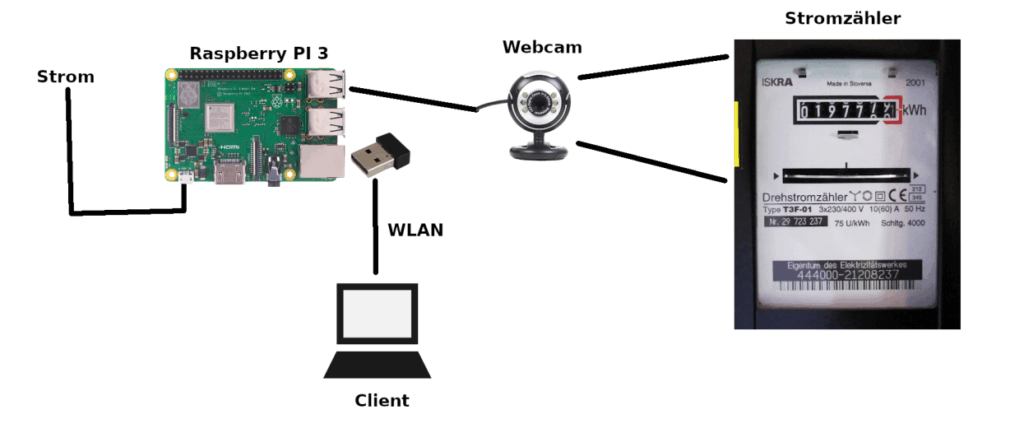Many mid-sized companies handle a large volume of documents manually — from invoices and delivery notes to contracts and reports. In this project, we worked with a client to explore how AI could simplify their workflow. Through a focused proof of concept, we evaluated the potential of AI-powered document extraction and validation to save time, reduce manual effort, and improve data accuracy — all before committing to full-scale implementation.

To explore a more cost-effective alternative, we ran an AI Opportunity Sprint focused on a simple question: Can computer vision turn existing analog meters into reliable digital data sources — without costly replacements?
Over a few weeks, we analyzed the business case, built a lightweight prototype, and tested whether AI could provide the needed accuracy and ROI.
The company wanted to improve the accuracy and frequency of its energy data — but wasn’t sure how to do so efficiently. Their main challenges were:
– Manual readings were slow and inconsistent, creating delays and errors in reporting.
– Limited data resolution (daily or weekly readings) made demand forecasting and energy trading difficult.
– Inaccurate forecasts led to higher energy costs and missed optimization opportunities.
– Upgrading to smart meters required major capital investment, with uncertain ROI.
Before committing to large-scale hardware upgrades, the company needed to test whether AI could offer a reliable, low-cost alternative.

To test whether AI could replace manual readings without costly hardware upgrades, we ran a short AI Opportunity Sprint focused on validating the concept.
Over a few weeks, we designed and tested a low-cost prototype using off-the-shelf components and AI-based computer vision.
What we did:
– Exploration & setup: Analyzed the company’s existing metering process and identified where automation could provide the highest ROI.
– Prototype build: Installed a simple Raspberry Pi with a camera on one analog meter to capture images periodically.
– AI validation: Used computer vision and digit-recognition models to read the meter values automatically and benchmarked accuracy against manual readings.
– Data flow test: Simulated integration with the company’s existing energy monitoring system to confirm technical feasibility.
The sprint proved that AI could accurately digitalize analog meters using inexpensive hardware — providing real-time consumption data without replacing existing infrastructure.
The proof of concept provided clear evidence that AI could be a viable alternative to expensive smart meter upgrades.
Key findings from the sprint:
– High accuracy: The AI prototype consistently read analog meters with precision comparable to manual readings.
– Increased data frequency: Automated readings every 15 minutes provided far more detailed insights for forecasting and optimization.
– Validated business impact: The analysis showed potential for measurable cost savings through improved energy forecasting and purchasing.
– New opportunities identified: Real-time data could enable participation in intraday trading and control power markets — insights that were previously unavailable.
– Positive ROI potential: The projected implementation cost was significantly lower than replacing all meters with digital units.

Rather than committing to a full rollout blindly, the company now had validated data and a quantified business case to guide next steps with confidence.
As part of the sprint, I built a demo prototype to test whether computer vision could reliably extract data from analog meter images.
The goal wasn’t to deliver a finished product, but to validate the technical feasibility and accuracy of the concept — using a minimal setup that mimicked real-world conditions.
This proof-of-concept demonstrated the core capability: recognizing and digitalizing meter readings automatically from standard camera images. In a full deployment, the same approach could be integrated with simple hardware devices and existing energy management systems — enabling real-time data collection at a fraction of the usual cost.
This sprint didn’t just validate AI-based analog meter reading — it also revealed a broader opportunity: many industrial and energy companies have analog data sources that could be digitalized with minimal investment.
Once the company saw what was possible, we identified several related use cases worth exploring next:
– Gas and water meters with similar analog displays.
– Factory machinery readouts and gauges.
– Pressure/temperature gauges
– Utility infrastructure components such as pumps, pipes, or grids.
Each of these represents a potential low-cost, high-impact opportunity for AI to bridge manual analog processes and digital workflows. Through short validation sprints like this one, companies can build a clear roadmap for where AI automation delivers the best ROI — without large upfront commitments.